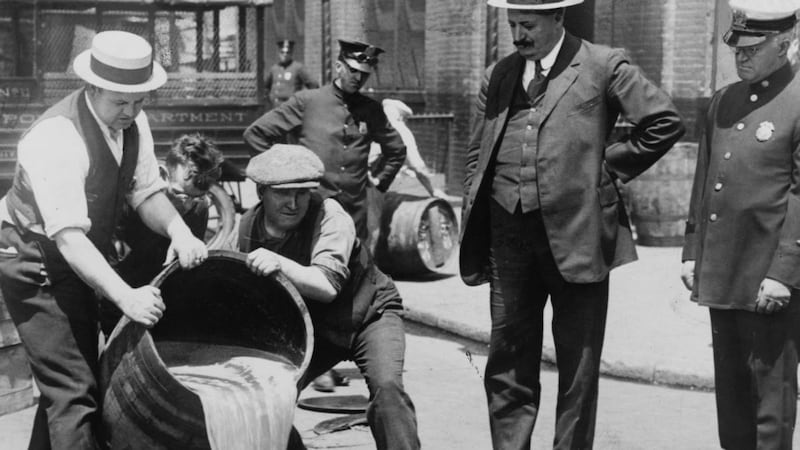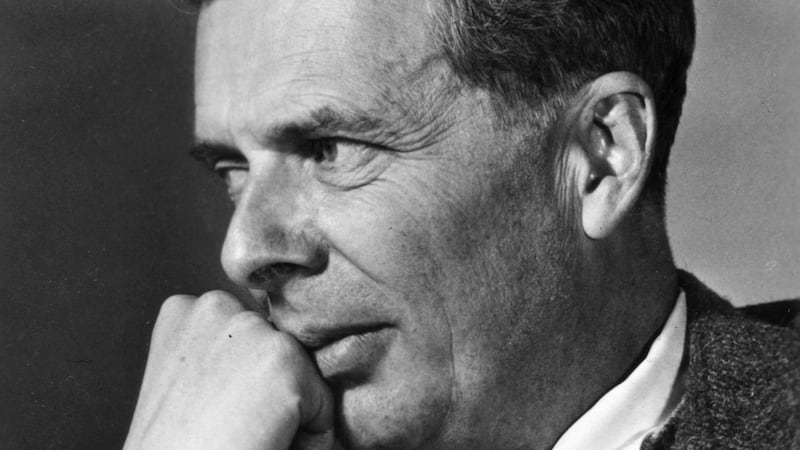This month marks the centenary of an experiment that forever changed the United States of America. In January 1920, Prohibition was enacted. The 18th amendment to the US constitution made the sale of alcohol illegal. Prohibition lasted for 13 years and, during that time, alcohol consumption declined, as did infant mortality and alcohol-related diseases. On the other hand, organised crime flourished, most famously through the likes of Al Capone and his gang, who cornered a ready black market.
Other, unexpected side-effects of the Prohibition project included the increased social acceptance of women drinking. Saloons were male-dominated affairs, but the new underground speakeasies, already sited outside the cultural mores of society, were more liberal spots, and women were welcome. They also opened the doors to limited racial integration, as jazz musicians travelled from New Orleans, through Chicago and on to New York, heralding the dawn of what would become known as the Jazz Age.

People have endeavoured through the entire history of human experience to get out of their heads
F Scott Fitzgerald's quintessential Jazz Age novel, The Great Gatsby, was written five years into Prohibition. It is drenched in champagne, cocktails and other illicit alcohol. As was its author. The legends of the Jazz Age inspire the idea that creative intoxication is a legitimate thing. Those legends predate Prohibition: take the laudanum-soaked Romantic era, Coleridge's Kubla Khan, and Thomas de Quincey's rather tedious Confessions of an English Opium Eater of 1821. Later, Aldous Huxley would document his psychedelic experiences on mescaline in The Doors of Perception (1954).
Whether through ingesting substances or enacting rituals, people have endeavoured through the entire history of human experience to get out of their heads. Psilocybin (or magic) mushrooms are depicted in Stone Age rock art, and in pre-Columbian sculptures throughout Central and South America. But is that because, as TS Eliot wrote, “human kind/ Cannot bear very much reality”? Or is it something more than simple escapism?
Alleviating anxiety
Research into psilocybin as an antidepressant was cut short in the 1970s when it was classified as an illegal drug, but a more recent relaxing of the ban has enabled studies at universities including NYU and Johns Hopkins in the USA, which seem to demonstrate its positive effects in alleviating anxiety, particularly in those with fatal diagnoses. Ironically, researchers are also exploring using it as a drug to treat other addictions.
We live in a rational age, and yet our minds are also creative, and capable of imagining the richer mysteries of many things we cannot see. Sometimes ritual, or intoxication, can engender a sort of “seeing beyond”: glimpses of what might lie behind what the Romantic poet Shelley called “the painted veil which those who live/ Call Life”. Depending on the time and place, these may be classified as religious visions, or moments of madness.

Quantum theory occupies an intellectual space once reserved for maverick dreamers
Shakespeare had Hamlet say, "there are more things in heaven and earth, Horatio, than are dreamt of in your philosophy," and language helps our thinking minds to shape some sense of the world we live in. With its greater access to abstract symbols, visual art can take us further towards other realities. Poetry, with its symbol and metaphor, closes in too. But does the fact that we have always reached for these alternative realities mean they are there, or is it that we need to believe they are?
Advances in science, once the realm of the solidly practical, are proving that reality extends far beyond what we can easily perceive. Quantum theory occupies an intellectual space once reserved for maverick dreamers. Maybe we are hardwired to delve into the realms beyond the immediately visible. Equally, not all minds work in the same way, and social change has outpaced our own evolution. Today’s world doesn’t have so much space for those who in past ages may have been lauded as heroes, adventurers and visionaries.
Social asceticism
The centenary of Prohibition ushers in an era in which we seem to be tending towards a new social asceticism, and yet conversations about the use of medicinal cannabis, and legalising drugs in order to dismantle organised crime, are current and urgent. But it is also worth considering the role of alcohol and drugs through all the millennia of recorded human history – for good as well as ill. That history is littered with casualties: for every writer or artist who thrives on a mind-altering moment or two, there's another, a Dylan Thomas or a Brendan Behan, destroyed by their addictions – or by whatever it was their addiction was seeking to release.
There are others who thrived on the myths. Nobel literature laureate Ernest Hemingway revelled in his notoriety, whether as a drinker of mojitos or martinis, but he never drank while working. In Ireland, we have a troubled relationship with alcohol, but it's worth reflecting on what happened in the United States when they tried to ban it, exactly 100 years ago this month.















